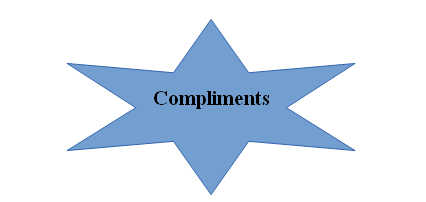|
| ||||||||||||||||||||||||||||||||||||||||
|
| |||||||||||||||||||||||||||||||||||||||
|
Unit IVThis unit looks at different ways of complimenting and responding to compliments in different cultures, and particularly at areas of potential embarrassment and confusion.
I. Make a list of as many expressions connected with “compliments” as you can:
II. Match the expressions to the definitions:
III. Write the suitable reply to fill the gaps: 1. You say this when someone has been successful, such as when they have passed an exam. A common reply is …..... 2. You say this when something bad or unfortunate has happened to someone, such as if they fail an exam. You don't use it for something serious, such as s death or illness. A common reply is …..... 3. You say this to compliment someone on food they have brought or prepared for you. A common reply is …..... 4. You say this when someone is going to do something difficult or unusual, such as when they're about to take an exam. The common reply is …..... 5. You say this to compliment someone on their home. A common response is …..... 6. You say this to compliment a woman on her dress. A common reply would be …..... 7. You say this to comfort to someone when something unfortunate has happened. A common reply is …..... 8. You say this to compliment someone on how they look, especially if they look very healthy or are wearing fine clothes. The best reply is ….....
IV. Watch the short video “Complimenting Someone”on www.youtube.com (http://www.youtube.com/watch?v=gNOkzntIpwU) Make dialogues using expressions from the video. | ||||||||||||||||||||||||||||||||||||||||
|
| ||||||||||||||||||||||||||||||||||||||||
| Сайт создан по технологии «Конструктор сайтов e-Publish» | ||||||||||||||||||||||||||||||||||||||||
